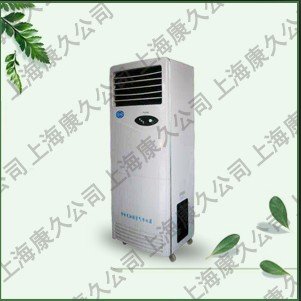Most food production companies in China suffer from bacterial contamination. Experts explained: After the food is contaminated by toxic bacteria, it will multiply and cause poisoning if it is not heat-sterilized before eating. Common bacteria include Salmonella, Proteus, Vibrio parahaemolyticus, pathogenic coliform, toxin-producing staphylococci, Clostridium botulinum, Bacillus cereus, and Weedella. Bacterial food poisoning occurs mostly in summer and autumn, and animal foods occur more frequently. Plant foods such as leftovers, cold cakes, soy products, and noodle-fermented foods also occur.
The degree to which food is contaminated by general bacteria is an important indicator for evaluating the quality of food hygiene. There are no or few bacteria in the natural food raw material organization. The bacteria in food mainly come from external pollution in all aspects of production, storage, transportation and sales, as well as breeding and breeding in food. The total number of bacteria contained in foods of unit weight or capacity is called the total number of bacteria, and the quantitative food is plated under the specified conditions, so that each living cell that adapts to these conditions must and can only produce one visible to the naked eye. Colonies, the result of which is called the total number of colonies of the food, is now widely adopted as a hygienic standard for various foods. Bacterial contamination is the main cause of food spoilage. An important measure to prevent food spoilage is to reduce the chance of contact with bacterial sources, control the conditions on which the bacteria depend, and sterilize the food to varying degrees.
Bacteria are widely found in nature, and the pollution of food materials is closely related to the hygienic conditions of their surrounding environment. Therefore, the control of food raw materials before collection and processing is very critical. Common bacteria contaminated by animal and plant foods are Pseudomonas, Acetobacter, Achromobacter, Yellow Bacteria, Escherichia, Salmonella, Proteus, Clostridium, Staphylococcus, etc.
In the process of food processing, the hygiene requirements such as cooking, raw and cooked, mechanical washing, etc., and unhygienic management methods are not strictly implemented, so that the existing or contaminated bacteria in the food are multiplied and grown, resulting in food quality. decline.
There are a large number of microorganisms in the natural environment, which can contaminate food by attaching to plants, dust, air, and the like. Therefore, strengthening the hygiene protection during the production, storage, transportation and marketing of food is the key to prevent bacterial contamination and ensure the quality of food hygiene. Food processing rooms should be clean, dust-free, well ventilated, and have filtering devices ; ensure that the appliances are clean and sterilized if necessary ; production should be sealed and continuous automatic devices ; cooked food sales must strictly implement food hygiene regulations and ensure that they are not sold. Corrupted foods ; good personal hygiene, and separate raw and cooked foods, dust and fly-proof equipment to reduce bacterial contamination of food. During storage and transportation, the method of freezing can effectively limit the growth of bacteria in contaminated food.
So, what measures should be taken to solve these thorny problems in the process of food production and processing? The main safe production method is another way, which is worth exploring.
For example, in the production and processing of food, the number of colonies exceeds the standard and the microbes exceed the standard, so it should be more targeted disinfection and sterilization methods to deal with.
With the continuous development of the times, the processing of some foods is becoming more and more refined, and the processing cycle is longer. Due to the long food processing and production cycle, this is an objective phenomenon, that is, the food is exposed in the air. It has increased, so the space and time for the growth of bacteria have increased, and the problem of excessive number of colonies is more likely to occur.
Then, in this realistic situation, it is necessary to use a safer and more efficient dynamic disinfection and sterilization method to effectively disinfect and sterilize food. The dynamic disinfection method is superior to other types of sterilization methods because of its unique disinfection and sterilization. According to Zhou Zhou, an engineer of Shanghai Kangjiu Disinfection Technology Co., Ltd., the sterilization principle of this disinfection and sterilization technology is to generate a large amount of plasma by generating a counter-electric effect in the cavity of the NICOLER through a special pulse signal . Under the action of the negative pressure fan, the polluted air is pumped into the cavity, and the negatively charged bacteria are broken down. The entire sterilization process takes only 0.1 seconds, and then the drug is impregnated with activated carbon and other components for secondary sterilization and filtration, and the controlled environment is maintained. In the " sterile dust-free " standard. Since the person can work in the workshop at the same time when disinfecting the workshop, the sterilization technology can also be called a " food dynamic sterilization machine " .
The dynamic disinfection and sterilization method has strong applicability and can be applied to all aspects of food production and processing, and can effectively disinfect and sterilize foods, so that the number of colonies is always maintained in a standard condition.

Soft Round Sling,Endless Soft Sling,Round Webbing Sling,Endless Round Sling
Jiangsu Zhongyi Work Rigging Co., Ltd. , https://www.zy-rigging.com
